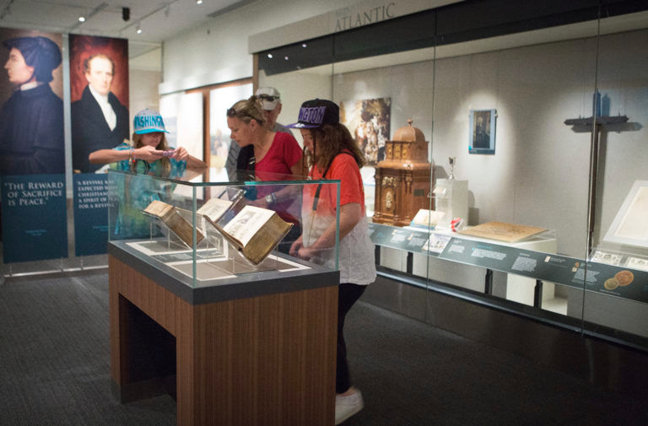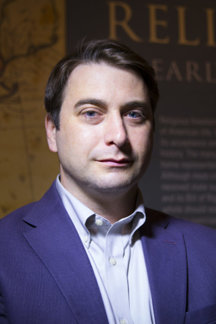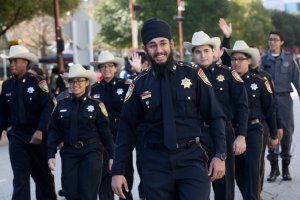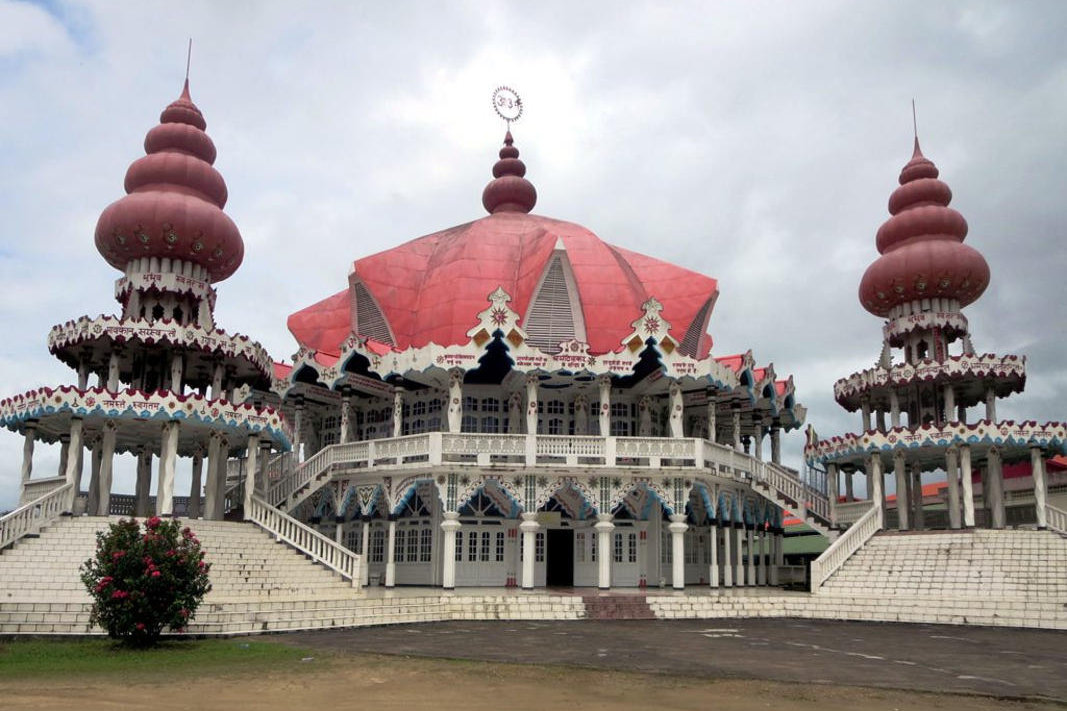A Catholic Sun article, excerpted here, on the Smithsonian National Museum of American History’s new exhibition, “Religion in Early America,” details some of its most interesting features.

Peter Manseau, the museum’s Lilly Endowment curator of American religious history, is the author of several books and curator of the new exhibit.

“We can’t really think about the role of religion in America today without wondering about how it all began,” Manseau told Catholic News Service.
Some of the exhibit’s biggest draws are the Jefferson Bible, the George Washington Inaugural Bible, Archbishop John Carroll’s chalice and paten and a church bell forged by Paul Revere.
Other noteworthy objects include the Communion cup of Gov. John Winthrop of Massachusetts, a Torah scroll damaged in 1776 during the British occupation of Manhattan, a 19th-century Arabic manuscript and an iron cross made by the first English Catholics in Maryland. Pope Francis used this cross at his papal Mass in Washington in 2015.
“According to tradition, it was made by the first English Catholics who came to America on the Ark and the Dove in 1634,” Manseau said. “When they needed a cross to use in their public worship, they took iron ballast beams and had a blacksmith pound them together into a new iron cross that they used.”
The exhibit, which opened June 28, displays artifacts and stories of American religious life from the 1630s to the 1840s. Reflecting the many Christian denominations that made up early America, it also features noteworthy items of Jewish, Islamic, Mormon, Native American and other faith traditions. Visitors from diverse backgrounds will likely find their own religious beliefs represented in the objects.
“The real power is seeing all of these together, and recognizing that these are all part of the same American story,” Manseau said.
For the full article, visit the Catholic Sun.


